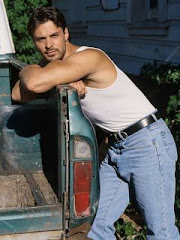As a follow-up to my recent post on the latest figures from the Williams Institute, here's the Wall Street Journal's explanation of why it's so damned hard to come up with a reliable estimate of the number of gays (and other queer people):
In recent years more surveys have included questions about sexual behavior and identity, giving researchers a better shot at making an estimate. They also have learned how difficult it can be to define homosexuality, and to determine to what extent survey answers are affected by the way the questions are asked.So. If a stranger knocks on your door, or calls you on the phone, and asks, "Are you gay?" - how many people will give a straight answer to that question? Online and anonymous, more people might be comfortable telling the truth - but that limits your field to people who are young and smart and affluent enough to own a computer - and who care about answering that kind of survey. Which is not reflective of the whole population.
The Census Bureau, for instance, says it saw the number of people who identified themselves as spouses to someone of the same sex drop by more than 50% in 2008 from a year earlier just because of how the questionnaire was organized. "It's a very difficult statistical issue," says Howard Hogan, the agency's associate director for demographic programs, of counting same-sex couples. . . .
One problem [that demographers have noted about the Williams Institute] findings is that they combine results from surveys with different sample sizes and interview formats. The California Health Interview Survey canvassed about 50,000 Californians in 2009 by phone, finding that 3.2% identified themselves as gay, lesbian or bisexual. In contrast, roughly 5,900 people took Indiana University's online National Survey of Sexual Health and Behavior in 2009, and nearly twice as many— 5.6%—identified themselves that way.
"I think there are a lot of problems with every one of those data sets," says Randall Sell, associate professor at Drexel University's school of public health. A concern, he says, is that people are more likely to reveal their sexual identity via computer than by phone or in person.
Dr. Gates [author of the Williams Institute report] says without more information about the validity of each survey, averaging the results is the best compromise. "You can make an argument they're all credible," he says.
And what does "gay" mean, anyway? Having come out in 1980, the question has long been settled in my own mind. But ya know, guys, I have met friends in recent years who put off coming out till they were past 50; and meanwhile were married or had girlfriends, maybe some kids too. Think of Jack and Ennis in Brokeback Mountain, which is very true to life out here on the prairie.
Likewise, I've also known mature women who were happily married, doing the wife-and-mommy thing; then one day woke up to the fact that they liked girls. Women's sexuality is often much more nebulous and fluid than men's, I've concluded, for reasons that have a lot to do with the plumbing and wiring.
Then too, I've, um, known guys who merrily fooled around with other guys in the rush of teenage sexuality; but later married a girl and have lived happily ever after with never a backward glance. So the question of "how many" is not totally clear until you decide on the "what" to count, see?
Which is why Kinsey - who is constantly misquoted by the media on this subject - brilliantly came up with the Kinsey Scale. Which is much more reflective of the reality of sexuality, I think, than any simplistic gay/straight dichotomy. A truly accurate survey would have to be based on something like that, seems to me.
Bottom line: Your Head Trucker's experience strongly suggests that no more than 3 to 5 people out of a hundred, at most - depending on where you are, and what kind of group you are in - are gay enough to raise a blip on my gaydar. Which is not all that good, I'm sorry to say - but that's been my consistent experience for the last thirty years or so down here in Dixie.
 |
| The Kinsey Scale |





























4 comments:
I think the percentage of people who fall into the "bisexual" category is much higher than is generally acknowledged. It is not in the interest of either gay advocates or their enemies to make much of the existence of such people and they tend to be regarded as perverts by both camps. However, to come to an accurate understanding of human sexuality they need to be included in research results and because of the nature of bisexuality it is difficult to do this.
Most gay people can say that they are definitely gay and most straight people can say that they are definitely straight. But bisexuality does not have such a definite quality to it. On "settling down" most bisexuals will make a deliberate decision to accept one expression of their sexuality and are comfortable in doing so. They do have a choice and it is little different to deciding which of two men, or two women, that they fancy, they want to spend the rest of their life with. To marry one person and spend the rest of your life wishing you had married a particular somebody else does happen but it is rare and bordering on a mental health problem.
My guess is that when asked if they are straight or gay, many, maybe most, of those who have made this, hopefully, life long decision, will answer one or the other and not either. It's easier.
When you add the transgender spectrum into this equation the whole thing becomes incredibly complicated.
This leads me to conclude that using statistics to show the split in human sexuality is unhelpful, misleading and downright dangerous. You only have to observe the way the haters crow when a piece of research shows there are slightly less gays than was previously thought. But, so what? The number of people suffering from Downs Syndrome should not, and usually does not, effect our compassion for them. Jesus was nailed to a cross. Should we ignore that because there was only one of him?
Well I agree with you, for the several reasons stated in my post: some men who know they are gay at heart chose to go ahead and live a "straight" life anyway. (These were the generations who grew up in the 20th century; I wonder if fewer are doing so today.)
And there are bisexuals, though I have known only two: one college acquaintance, and one guy I briefly dated many years later. Both told me they felt equally attracted to both sexes.
So yes, a yes/no, straight/gay survey is bound to be misleading and inaccurate. More nuance and greater understanding of the somewhat arbitrary boundaries of sexuality needed.
PS - I also want to say that these surveys need to stop lumping teenagers in with the adults. Lots of experimenting (in all directions) goes on among young people all the way up through college; but by age 24 or 25, the vast majority tend to settle down to one thing or another.
Adolescent sexuality should of course be counted and studied; but I think all that experimentation may well skew the figures.
MadPriest made some very good points which go along with my comment on your last post about this subject. Statistics can be so dangerous. If there were only 1 single gay man in the whole world, he should be treated with the same respect as any other man. I'm still trying to understand the motive of it all.
Post a Comment